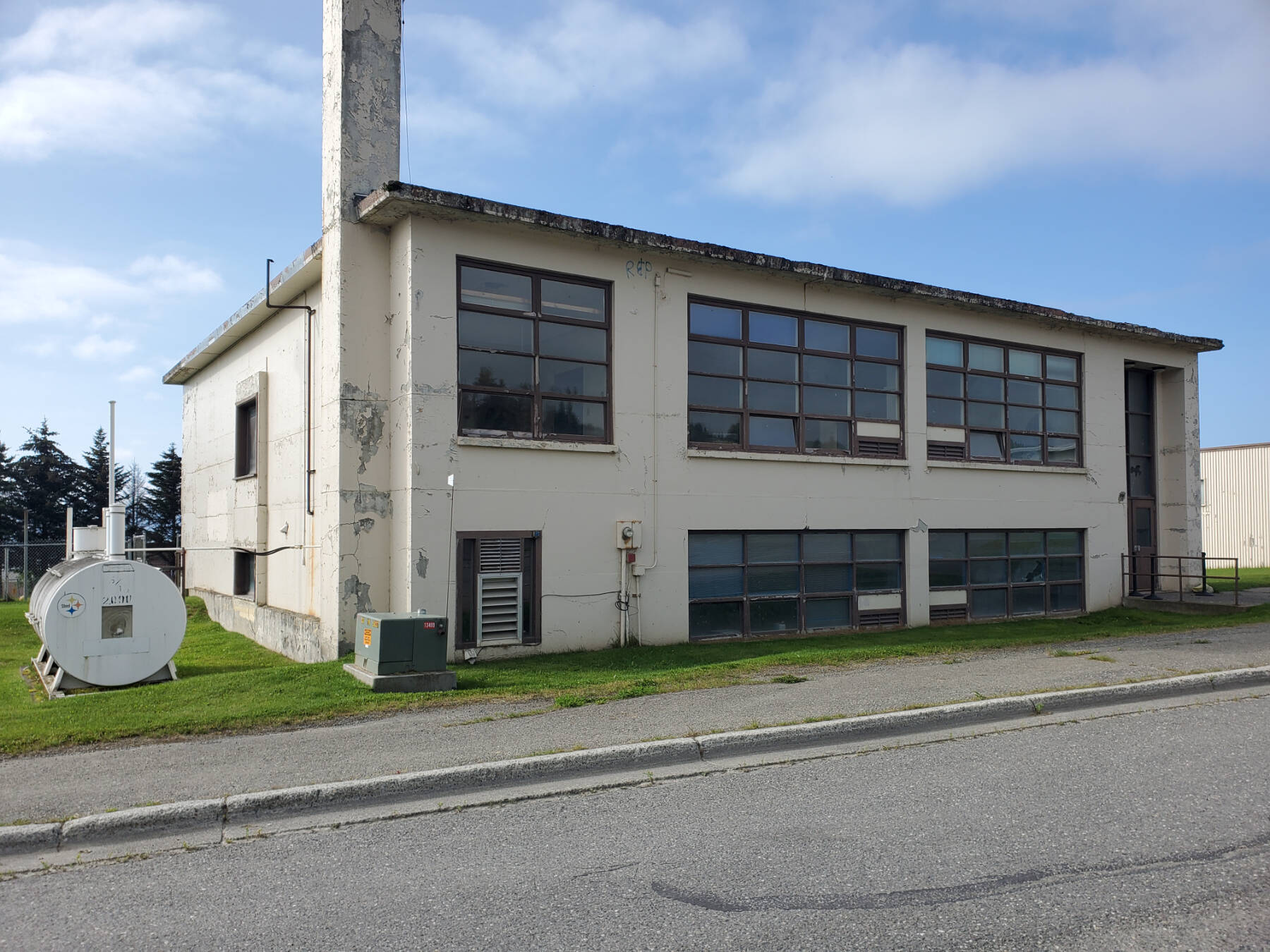It looks like the HERC will be sticking around town a while longer.
At a special city council work session on Monday, Aug. 14, economic development director Julie Engebretsen gave an update to council regarding the presence of hazardous materials in the Homer Education and Recreation Center and the future of a new community recreation center in Homer.
In short, the city will need to explore some creative avenues in order to achieve their original goals.
One of the ideas discussed at the last HERC work session held in March was to demolish the smaller HERC building, also called HERC 2, and use the site for a future new community center. However, based on the results released from the hazmat testing conducted on the HERC earlier this year, demolition of HERC 2 has “hit some pretty serious roadblocks,” Engebretsen said on Monday.
The City of Homer contracted Hazardous Building Materials Consulting, LLC in the spring to conduct a limited hazmat assessment of the larger HERC building, also called HERC 1, and a comprehensive hazmat assessment of HERC 2. According to an Aug. 10 informational memorandum to city council from Engebretsen, the assessment results reveal that both buildings, as expected due to their age and the prevailing construction materials utilized in the 1950s when the buildings were constructed, contain hazardous materials including lead paint, asbestos, and materials like paint and varnish that harbor polychlorinated biphenyls, or PCBs.
These test results, notably the presence of PCBs in construction materials within the buildings, hold “significant implications” for the future of the HERC, either demolition or renovation.
“The state does not allow PCBs, in the concentrations that we have them, in any landfill in the state of Alaska,” Engebretsen told the council on Monday.
State regulations for PCBs being disposed of in Alaska landfills are much stricter than federal regulations set by the Environmental Protection Agency.
“The EPA regulates PCBs in 50 parts per million or more,” Engebretsen said. “The state of Alaska is saying, ‘Well, if you have one part per million, then you can’t go in a state landfill.’ So there’s a pretty big gap, because most of our PCBs are in the 3-5 parts per million (range). There’s a couple at 12 parts per million. But they’re not super saturated materials, they just happen to be above that state threshold.”
This means that construction materials from the HERC would have to be disposed of outside the state of Alaska.
Engebretsen also noted that this is a statewide issue.
“This is a relatively new issue, like within the last couple of years,” she said. “I think solutions for that are going to be on a broader state level. In the meantime, though, it means that we’re kind of stuck with this building, and don’t have great immediate avenues.”
To proceed any further, full assessment and hazmat abatement for both buildings is necessary — but this requires grant funding and will take years, city staff has found.
“We’re talking big dollars, and it’s going to take a significant amount of time,” Engebretsen said.
Engebretsen did note that some opportunities for grant funding will become available soon, including an EPA Brownfield Grant cycle set to open this fall. She also told council that she has been in touch with the Center for Creative Land Recycling, an organization funded by the EPA specifically to help communities like Homer go through the EPA grant process.
“They’re huge lifts to applying for these funds,” she said. “In my recent conversation with them, the city could potentially apply for a grant to do site assessment and some cleanup work, so there is some opportunity out there. But it is not quick for sure.”
According to the Aug. 10 memo, city staff expect the notice of funding opportunity by the end of September, though it would be approximately October 2024 before funds would be available to begin work.
With regard to moving forward with construction of a new community recreation center, Engebretsen suggested “decoupling” the new recreation facility project from the HERC project and looking for alternate options, or sites, for building a new facility.
“The hazmat reports on these buildings make it clear that demolition costs will be much higher than the $153,000 budgeted for HERC 2,” the Aug. 10 memo states. “If the Council and community want to have a new recreation facility, there are a lot of hurdles outside of the City’s control on the HERC site. While a new community recreation facility remains a high priority for the community and city council, pursuing an alternate location would likely be the most cost effective and timely routine.”
Several council members expressed support for going after grant funding to resolve the issue of the HERC.
“These two buildings are ours, and we have to do something about them,” council member Donna Aderhold said. “Continuing to wait and allow these buildings to tear themselves down is not an option.”
Council also agreed to look at and compare property options. Council member Rachel Lord noted it would be useful to have “as much information as possible” to consider both as a council and as a community.
The Homer City Council will meet again with Engebretsen and city staff on Sept. 11 for a work session, which will focus on looking at potential options for different properties which might serve the city well for building a new recreation facility.
The full recording of the Aug. 14 work session, as well as the Aug. 10 memo summarizing the HERC hazmat testing results, is available at www.cityofhomer-ak.gov/citycouncil/city-council-work-session-10.
The full hazardous materials assessments for HERC 1 and HERC 2 can be found online at www.cityofhomer-ak.gov/economicdevelopment/herc-hazmat-reports.


